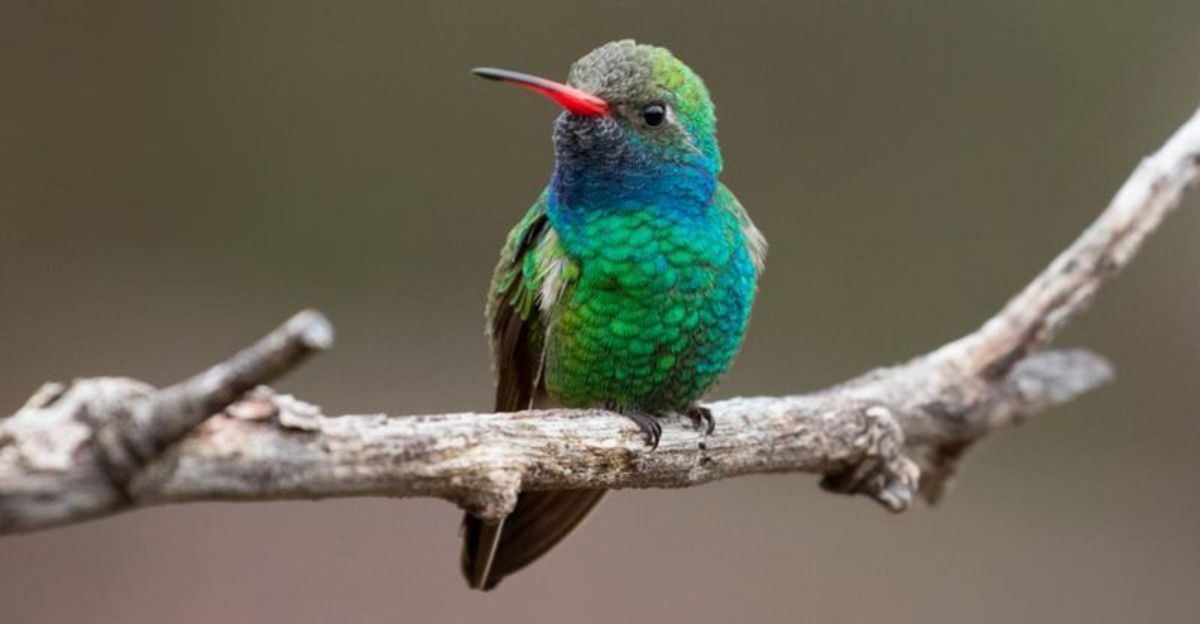Connecticut’s gardens and woodlands occasionally host some spectacular feathered visitors – hummingbirds!
While the Ruby-throated Hummingbird is the only regular resident, several other species make surprise appearances, especially during migration seasons.
These tiny aerial acrobats, weighing less than a penny, captivate birdwatchers with their jewel-like colors and remarkable flying abilities.
1. Ruby-Throated Hummingbird
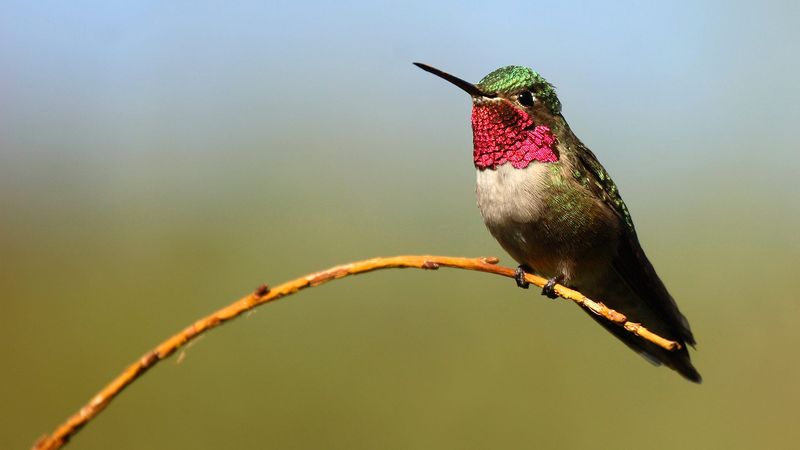
This tiny marvel is the only hummingbird species that regularly nests in the state. Males sport a dazzling ruby-red throat patch that flashes like fire when caught in sunlight, while females maintain a more understated elegance with their white throats.
They arrive in Connecticut around early May after an incredible journey, including a non-stop 500-mile flight across the Gulf of Mexico. Despite weighing less than a nickel, they beat their wings about 53 times per second!
Look for them hovering around nectar-rich flowers or visiting backyard feeders filled with sugar water from April through October. Their numbers peak during late summer migration when gardens buzz with their distinctive humming.
2. Rufous Hummingbird
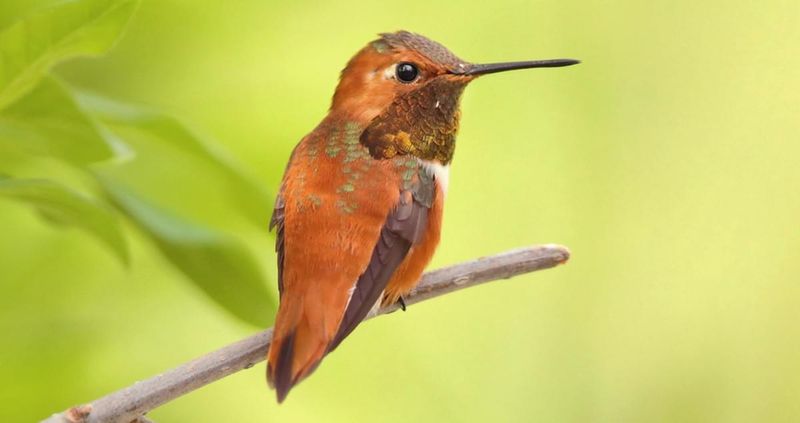
Though primarily western birds, Rufous Hummingbirds occasionally venture to Connecticut during fall migration, causing quite a stir among local birders. Their rusty-orange plumage makes them stand out among the greenery.
Pound for pound, these tiny fighters rank among the most aggressive birds in North America. They’ll fearlessly chase birds three times their size away from feeders, establishing aerial dominance despite their diminutive stature. Some Connecticut sightings have even occurred during winter months!
Expert navigators, Rufous Hummingbirds make one of the longest migrations relative to body size of any bird, traveling up to 4,000 miles between Alaska and Mexico. Watch for their distinctive orange-red gorget and territorial behavior at feeders.
3. Calliope Hummingbird
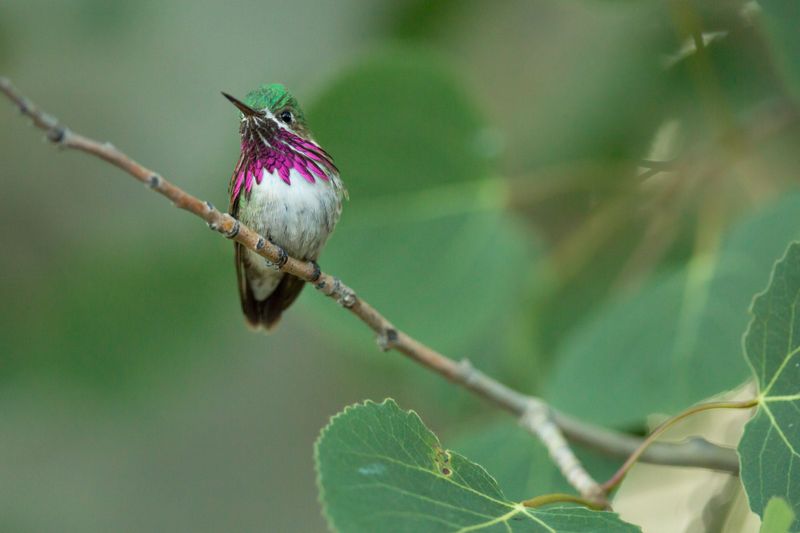
Named after the Greek muse of poetry and eloquence, this tiny visitor holds the title of smallest breeding bird in North America. Weighing about the same as a penny, Calliope Hummingbirds occasionally make rare appearances in Connecticut, delighting lucky observers with their distinctive magenta streaked throat.
Normally nesting in the mountainous western United States, these pint-sized travelers sometimes veer off course during migration. Males perform spectacular U-shaped courtship dives, producing a buzzing sound with their tail feathers to impress potential mates.
Connecticut sightings typically occur in late fall when these wayward wanderers show up at flower gardens or feeders. Their small size and relatively short bill help distinguish them from other hummingbird species, though spotting one requires sharp eyes and good fortune!
4. Black-Chinned Hummingbird
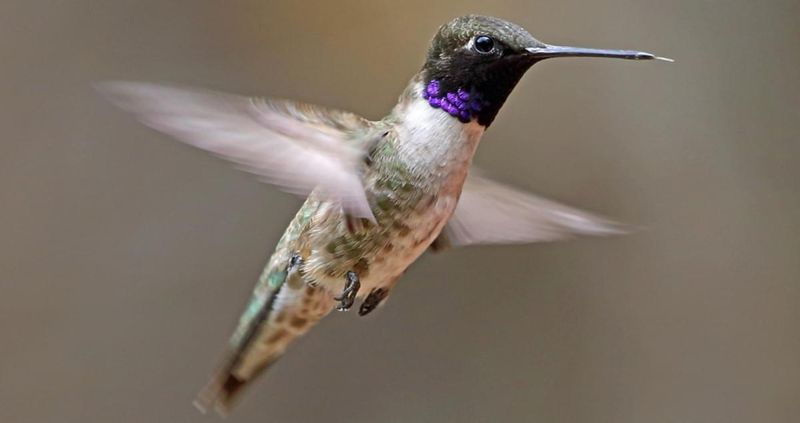
Sporting a velvety black chin with a thin strip of iridescent purple beneath, they occasionally make headlines when they appear in Connecticut. Black-chinned Hummingbirds typically inhabit regions from the Rocky Mountains westward, making East Coast sightings noteworthy events for bird enthusiasts.
Masters of adaptation, they’ve been documented visiting feeders during Connecticut’s chilly autumn months, defying expectations about their cold tolerance. Their wings beat an astounding 80 times per second, creating the characteristic humming sound that gives these birds their name.
Female Black-chinneds lack the distinctive throat markings but can be identified by their slightly curved bill and pumping tail motion during flight.
5. Broad-Billed Hummingbird
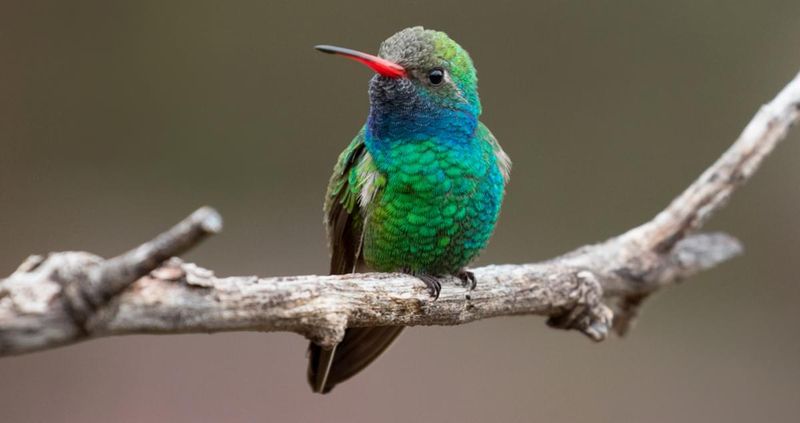
Turquoise lightning might be the best description for these stunning southwestern jewels that occasionally stray to Connecticut. With their brilliant blue-green body, striking red bill with black tip, and sapphire throat, Broad-billed Hummingbirds create instant excitement when spotted outside their normal range.
Connecticut has recorded just a handful of these magnificent vagrants, typically during late fall when young birds sometimes wander far from their expected migration routes. Their unusually wide, coral-red bill makes identification relatively straightforward even for novice birders.
Unlike some hummingbird species, Broad-billeds have a relatively calm temperament at feeders. They produce a distinctive metallic trill that sounds like a tiny rolling “r”, quite different from the buzzing of other hummingbird species.
6. Mexican Violetear

Formerly known as Green Violetear, this tropical showstopper causes a sensation whenever it appears in Connecticut. With emerald-green plumage and distinctive violet-blue patches extending from the eyes, these birds look like living jewels against Connecticut’s more subdued landscape.
Native to Mexico and Central America’s mountain forests, Mexican Violetears occasionally wander far north of their normal range. They’re larger than most North American hummingbirds, giving them an imposing presence at feeders when they appear.
Connecticut has documented only a handful of these magnificent strays, making each sighting a celebrated event in the birding community. Their loud, repetitive “chip-chip-chip” calls often alert observers to their presence before their spectacular colors come into view.
